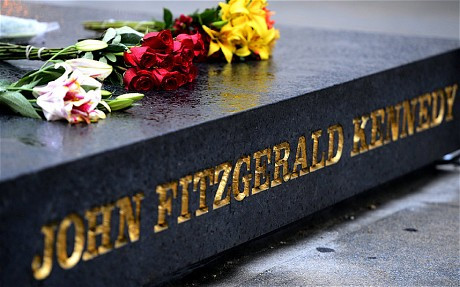Dedicated on June 24, 1970, the John F. Kennedy Memorial Plaza has since become a significant landmark in Dallas, Texas, embodying both urban artistry and profound historical resonance. Situated just east of Dealey Plaza, between Main and Commerce streets, the memorial stands on land generously donated by Dallas County, serving as a poignant tribute to the late President John F. Kennedy.
The design, conceived by the celebrated American architect Philip Johnson, takes the form of a cenotaph, or “open tomb,” intentionally crafted to symbolize the enduring spirit of President Kennedy. This memorial is structured as a square, roofless chamber, measuring 30 feet in height and 50 by 50 feet in width. Positioned centrally within the block, it features narrow entrances on its north and south sides, inviting contemplation and quiet introspection. The walls are constructed from 72 white pre-cast concrete columns, ingeniously designed to appear as if they are floating 29 inches above the ground, seemingly unsupported.
Within this architectural marvel, eight columns extend to the ground, functioning as structural supports that visually anchor the monument. Each of these load-bearing columns is topped with a light fixture. As night falls, these lights illuminate the structure from below, creating an ethereal illusion where light itself appears to uphold the weighty concrete, enhancing the memorial’s contemplative atmosphere. These distinct vertical elements, precisely separated and individually cast, evoke a sense of unity held together by an unseen, intangible force. Philip Johnson himself described this as a “magnetic force,” drawing a parallel to the compelling charisma of John F. Kennedy during his lifetime.
 Flowers laid at the granite marker inscribed 'John Fitzgerald Kennedy' within the John F. Kennedy Memorial Plaza, a place of solemn remembrance in Dallas.
Flowers laid at the granite marker inscribed 'John Fitzgerald Kennedy' within the John F. Kennedy Memorial Plaza, a place of solemn remembrance in Dallas.
Despite its aesthetic simplicity, the John F. Kennedy Memorial’s deeper purpose was not always immediately grasped. Conceived as a piece of reflective art, it initially lacked interpretive displays, intending to offer a space solely for personal contemplation and remembrance. However, as visitor numbers to both the Kennedy Memorial Plaza and the nearby Dealey Plaza increased, the need for an educational component addressing the Kennedy assassination became evident. This realization ultimately paved the way for the establishment of The Sixth Floor Museum at Dealey Plaza, adding a crucial layer of historical context to the site.
